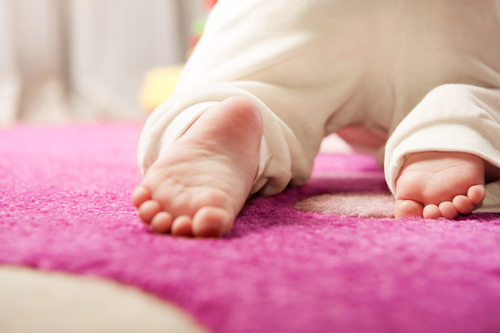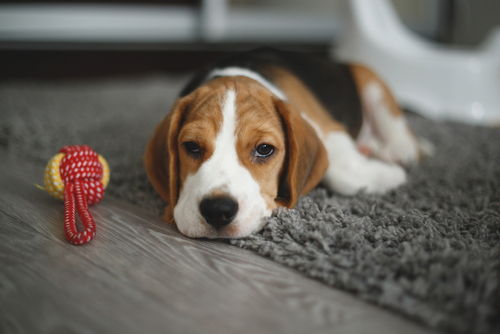
How to Clean a Dirty Mattress At Home?
December 19, 2022
How to Prevent Carpet Discoloration During Cleaning?
March 3, 2023Can Carpet Shedding Be Harmful to Pets & Kids?

Can Carpet Shedding Be Harmful to Pets & Kids? Many households deal with the problem of carpet shedding regularly. Both children and pets may be at risk if carpet fibers that have broken off on the floor fall to the ground. This blog post will look at the dangers of excessive carpet shedding and discuss ways to prevent it. Read on!
Can Carpet Shedding Be Harmful to Pets & Kids?

What Brings About Carpet Shedding?
Carpet shedding is a frequent problem that develops when the carpet fibers become loose and break off, leaving behind little tufts of fluff. Numerous things, including faulty installation, inadequate cleaning methods, worn-out carpets, and more, might contribute to it. Poor installation can result in fibers being twisted or loose, which can cause shedding.
Regular carpet deep cleaning and vacuuming can help avoid this, but proper equipment and methods are crucial to prevent damaging the fibers. As the fibers of old carpets deteriorate over time, they are also more likely to shed. The carpet fibers used can also affect how much shedding takes place. Unlike natural fibers like cotton or wool, synthetic carpets may shed more.
You might have pets in your house that enjoy chewing on your furniture or other items around the house, which is another explanation. Your carpet may shed and suffer fiber damage because of this. If you notice spots or stains developing on your flooring, a flea or mold infestation may be to blame. These pests enjoy consuming all the nutrients in your carpet, so they may later destroy them.
Is Excessive Carpet Shedding Dangerous for Children & Pets?

While some shedding is acceptable, too much carpet can harm your pet’s and your children’s health. The discharged fibers might swallow or inhale and cause allergies, respiratory problems, and skin irritations. In addition, the fibers may become stuck in your pet’s fur and be challenging to pull out, irritating them and making them itchy.
Some symptoms of allergies brought on by carpet fibers are sneezing, coughing, watery eyes, and a runny nose. Such allergies may even result in anaphylactic shock in rare circumstances. Furthermore, inhaling carpet fibers may cause respiratory conditions like asthma. If your cat or child comes into contact with these fibers and has sensitive skin, skin irritations and rashes may develop.
Kids and Pets Play on Carpets Frequently
Additionally, because children and pets frequently play on the floor, where shedding is more likely, there is a risk of ingesting carpet fibers. When carpet fibers are consumed, it may result in nausea, vomiting, and diarrhea. You should get medical help soon if your pet or child exhibits signs after coming into contact with carpets.
It is important to keep an eye on your carpets and take prompt action if there is any excessive shedding. You may shield your family from any potential health dangers by taking measures to lessen and stop carpet shedding.
Are New Carpets Secure, or Should You Hold off?
There are a handful of considerations to make if you’re considering purchasing a new carpet. Rugs could be more secure. Many people believe mats provide an additional layer of weather protection, but this is only sometimes the case.
Even though a carpet is brand new, it may sustain damage and wear over time. If not adequately held or maintained, carpet fibers might fray and become looser. It might result in rips in the cloth and holes in the carpet.
To prevent damage to your home’s furnishings, it’s crucial to select a carpet that offers specific treatment choices. Please ensure that whatever you set on top of your carpet is securely fastened. Also, please always check the security of the goods you put on your carpet.
How to Stop Carpet from Shedding

Although carpet shedding is a normal and inevitable process, you can take precautions to lessen the number of lost fibers that enter your home. Here are some pointers for avoiding carpet shedding:
- Regular Vacuuming: It will assist you in keeping the fibers under control and getting rid of them before they become an issue. You should vacuum your carpets at least twice a week. To achieve the best results, use a vacuum with a programmable power level and repeat the process numerous times over the same regions.
- Steer Clear of Using Aggressive Cleaning Agents: These can harm carpet fibers and increase their propensity to shedding. Please use only gentle, natural cleaning agents, and make sure you rinse any leftover residue.
- Minimize Foot Traffic: Avoid placing furniture and other objects that can produce friction and contribute to shedding in areas of your home that see a lot of foot traffic, such as hallways or entryways.
- Shake Mats and Rugs: Shaking your mats and rugs outside regularly will assist in getting rid of dust, dirt, and fibers before they become airborne. Make sure to conduct this activity far from pets and young children.
- Rotate Furniture: When furniture is left in the exact location for an extended period, it can rub against the carpet and produce shedding. Try moving furniture once a month to help distribute wear more evenly and reduce needless shedding.
Removal of Carpet Sheds
It’s critical to take action to get rid of the loose fibers from your household if your carpet is shedding. Vacuuming frequently and thoroughly is the ideal method for doing this. Use a vacuum with strong suction and a beater bar to help release any carpet strands that are trapped in place. Review each region several times to ensure all the extra fibers are removed.
You can use an electrostatic dust mop or a lint roller in addition to vacuuming. The electrostatic dust mop is the best tool for removing the smaller dust particles, while the lint roller is handy for taking up more giant clumps of fibers.
Furthermore, it’s critical to use caution when removing carpets. Thoroughly vacuum the carpet, but avoid pulling on the fibers, as this may cause them to break off and become more deeply embedded. When you remove carpets, please make sure you use the right equipment and supplies and dispose of them properly.
Can Carpet Shedding Be Harmful to Pets & Kids? – Final Thoughts

Pets and children may be harmed by excessive carpet shedding. Owing to the airborne fibers and tiny particles shed by pets and youngsters, it could pose health risks. Homeowners should often vacuum and shampoo their carpets to avoid this.
As a result, less dust and allergens will be released into the air. To reduce the amount of shedding, they should also utilize high-quality carpet that sheds little. With proper maintenance, homeowners can maintain their carpets’ pristine appearance and eliminate any risks for their pets and young children.



